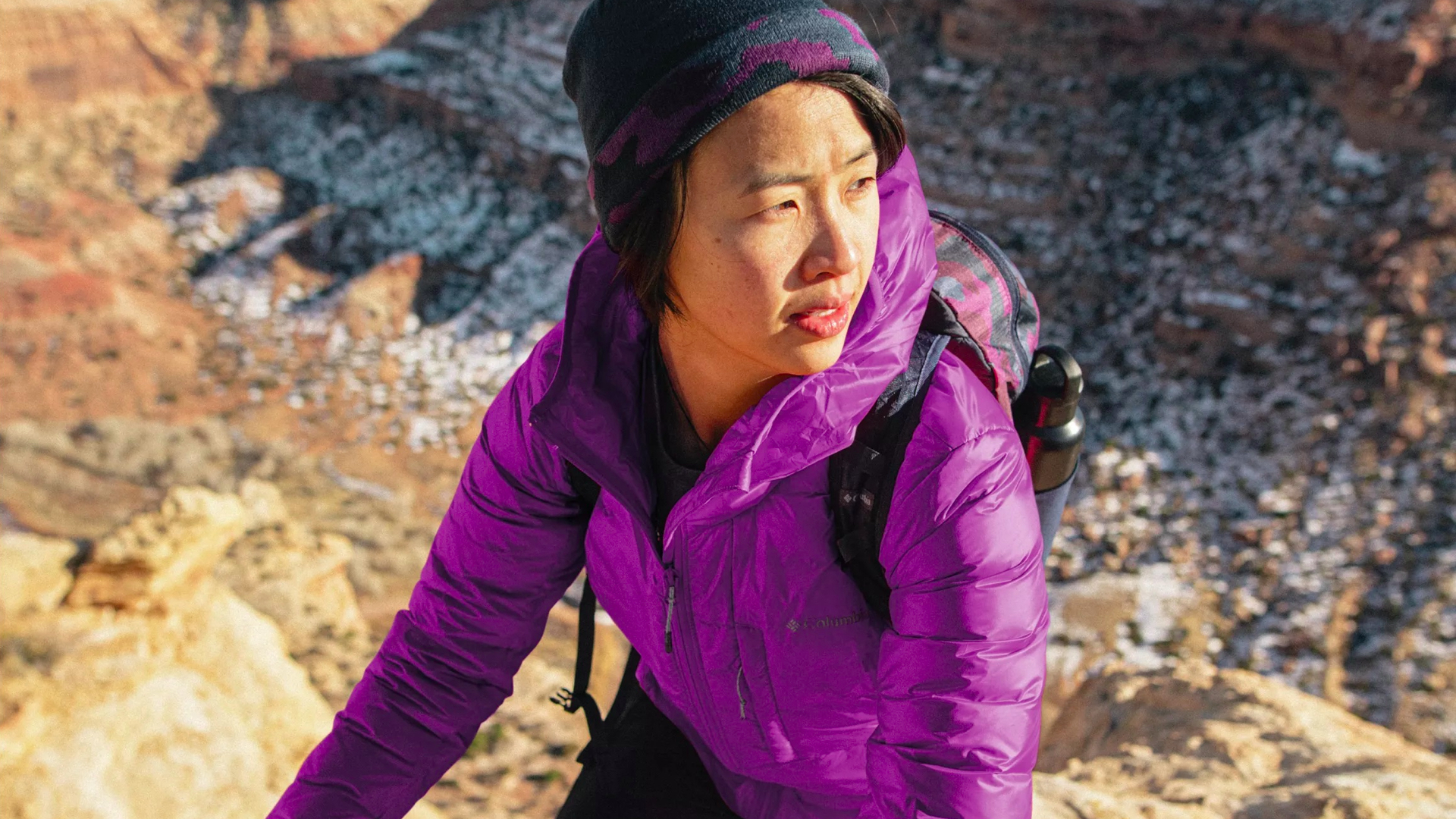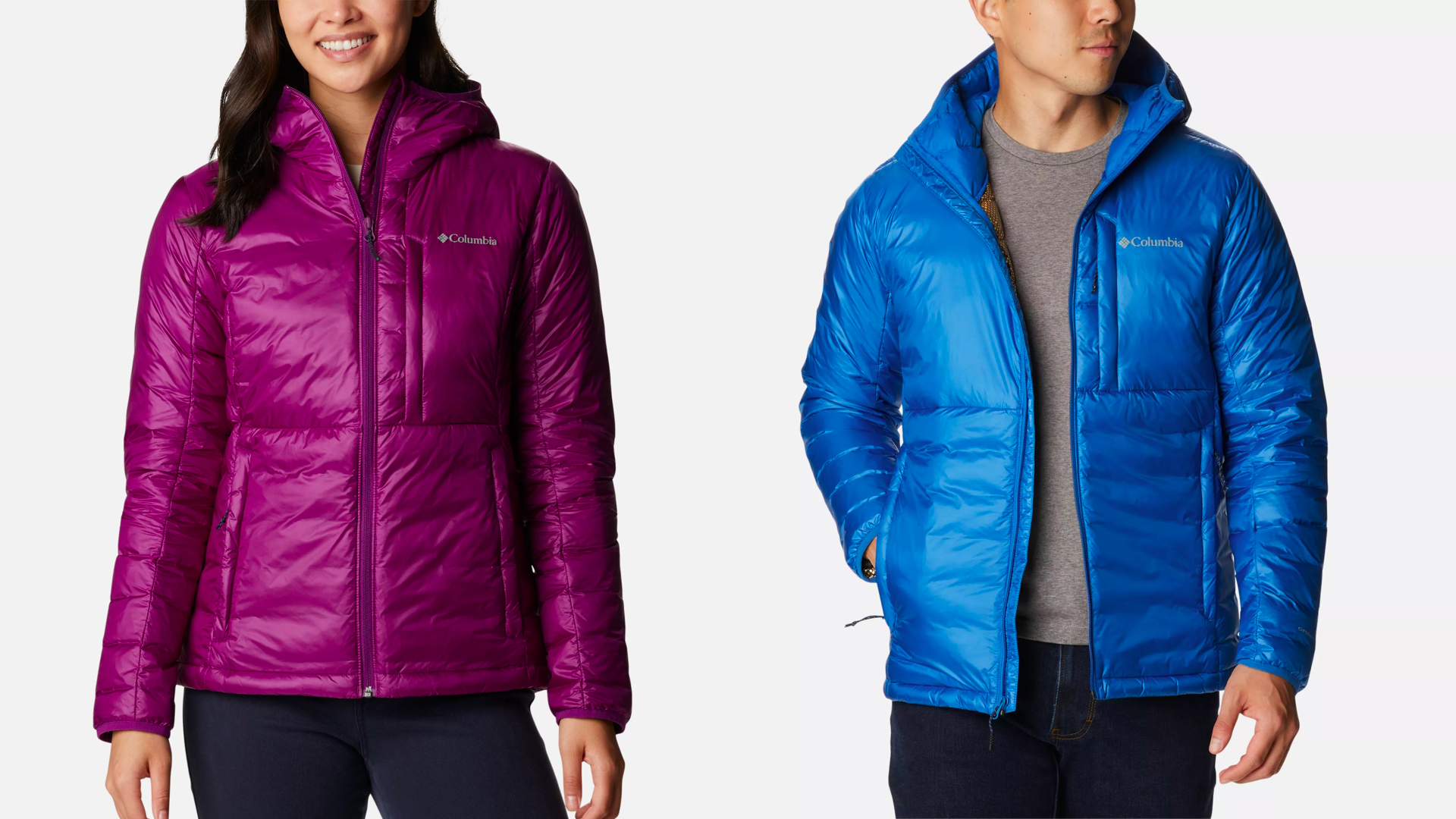Advnture Verdict
Thanks to its premium fill power down and innovative design, this jacket works well as an outer layer in cold and windy weather, seeing off most stitch-through down rivals. It’s a little heavier than many puffers though, with a fairly basic hood design and a slightly boxy fit.
Pros
- +
Premium down fill
- +
No cold spots thanks to double wall construction
- +
Omni-heat inner reflects body heat to increase warmth
Cons
- -
Down fill not moisture-resistant
- -
Slightly baggy cuffs
- -
No hood adjustment
- -
Boxy fit
- -
No inner pockets
You can trust Advnture
Columbia Infinity Summit Double Wall Down Hooded Jacket: first impressions
The Columbia Infinity Summit Double Wall come from a US brand that’s reluctant to turn out the same old stuff season after season. They’ve produced some of the most interesting and unusual outdoor kit we’ve encountered in recent years, across a number of categories – their OutDry waterproof jackets being a case in point.
Now they’ve turned their attention to insulated layers, and the Infinity Summit Double Wall is just as innovative when it comes to down jackets and puffers. The inner face of the jacket employs the latest iteration of Columbia’s Omni-Heat technology – a thermal reflective layer comprised of shiny metallic elements. In this jacket, it’s dubbed Omni-Heat Infinity, consisting of a new pattern of gold dots for even better heat retention.
More remarkable, however, is the face fabric of the jacket, which Columbia calls “double wall” construction. At first glance, this looks like a standard baffled puffer, but pull the fabric taut and you can see that there are no stitch lines at all. They’re hidden behind an additional layer of face fabric, designed to block wind and eliminate cold spots by trapping even more warm air inside the jacket.
The fill itself is premium 800FP RDS-certified goose down, while the shell and lining are both made from nylon ripstop fabric. The feature set is relatively simple but functional, with elastic-bound cuffs and hood, an adjustable hem drawcord, and three pockets – two part-lined hand warmers and a zippered chest pocket.
• RRP: $240 (US) / £225 (UK)
• Sizes: Men’s S / S / M / L / XXL Women’s XS / S / M / L / XL / XXL
• Weight (men's medium): 510g / 18oz
• Fill: 800 FP RDS-certified goose down
• Colors: Red Quartz / Black / Bright Indigo / Cirrus Grey / Plum
Columbia Infinity Summit Double Wall Down Hooded Jacket: on the trails

We were intrigued to get out into the hills with this jacket and see if all that tech delivered on its promise.
This isn’t the first time we’ve tested a jacket with Columbia’s Omni-Heat reflective liner. We’re still in two minds about it. Although it’s difficult to objectively measure its effectiveness, there’s no denying that it seems to make a difference in terms of overall warmth. It doesn’t seem to inhibit breathability to a great degree, particularly in this puffer, which isn’t primarily designed to be worn during high-intensity activity. On the other hand, the metallic sheen of the lining seems to somehow make the jacket feel colder and slightly less inviting when you first put it on – though the sensation soon dissipates. Still it isn’t quite as comfortable as a conventional fabric liner.
On the other hand, we’re big fans of the double wall construction. That additional layer of face fabric means that this jacket has no noticeable cold spots, unlike most stitch-through jackets, and is also likely to be less susceptible to down leakage or failing seams caused by snagging and abrasion. It also makes this jacket pretty much windproof. All of those plusses make it a winner in our books, particularly since the only downside is a little added weight.
All the latest inspiration, tips and guides to help you plan your next Advnture!
At just over 500g, this is a midweight down puffer, but the 800FP down (see also: what is fill power?) ensures that it offers a good level of warmth for that weight. It’s reasonably packable and is designed to stuff into its own chest pocket. The fit is perhaps a little boxy, which means it accommodates layers easily enough, but isn’t deigned to fit neatly under a shell – use this as a standalone outer layer rather than a mid.
Only minor gripes were with small details, mostly. We found the cuffs to be slightly baggy, as is the relatively simple hood. But the hem is easily adjusted via a drawcord to guard against heat loss, and the main zip is a reverse-coil design that is backed with a baffle. The pockets work well, though we wish the handwarmers were fully lined with microfleece rather than only lined on the outer side. Bear in mind that they are placed fairly low too, since this is designed as a puffer for general outdoor use rather than technical climbing or mountaineering.
Overall, something of a mixed bag – but as an outer layer in cold and windy weather, this jacket sees off most stitch-through down rivals.
An outdoors writer and editor, Matt Jones has been testing kit in the field for nearly a decade. Having worked for both the Ramblers and the Scouts, he knows one or two things about walking and camping, and loves all things adventure, particularly long-distance backpacking, wild camping and climbing mountains – especially in Wales. He’s based in Snowdonia and last year thru-hiked the Cambrian Way, which runs for 298 miles from Cardiff to Conwy, with a total ascent of 73,700 feet – that’s nearly 2½ times the height of Everest. Follow Matt on Instagram and Twitter.


